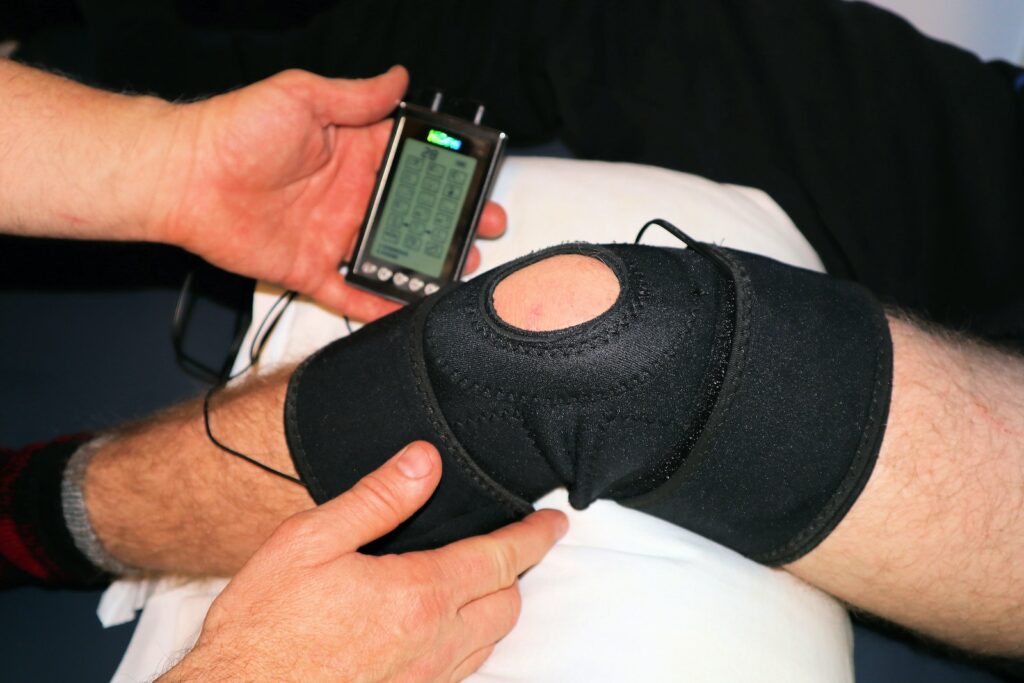Are you looking for ways to manage your pain and improve your overall health? Physiotherapy treatments are an effective and safe option for many people. In this blog post, we will explore common physio treatments and the benefits it provides.
Physiotherapists aim to help patients achieve optimal physical function and alleviate pain. Treatments range from manual therapy techniques to specific exercises targeted at improving strength, flexibility and balance.
In this article, we will discuss some of the most common physiotherapy treatments and their benefits.
Physiotherapy is a holistic approach that focuses on treating the root cause of an injury or condition rather than just addressing its symptoms. It offers a wide variety of treatment options tailored to each individual’s needs, goals and lifestyle.
Whether you are recovering from surgery, managing chronic pain or looking for ways to prevent future injuries, there is a physiotherapy treatment out there for you.
You might be interested in Work Injuries Management Using Physiotherapy
Let us dive into some of these treatments in detail and explore how they can benefit your overall well-being.
- Exercise Prescription For Improved Mobility
- Manual Therapy For Pain Relief
- Electrotherapy For Muscle Stimulation
- Ultrasound Therapy For Tissue Healing
- Heat And Cold Therapy For Inflammation Management
- Hydrotherapy For Joint And Muscle Relaxation
- Laser Therapy For Pain Management
- Rom (Range Of Motion) Exercises
- Tens Therapy For Nerve Stimulation
- Education And Self-Management Techniques For Long-Term Health
- Frequently Asked Questions
- What Types Of Injuries Or Conditions Are Not Suitable For Physiotherapy Treatment?
- How Long Does It Typically Take To See Improvement From Physiotherapy Treatments?
- Are There Any Potential Side Effects Or Risks Associated With Certain Physiotherapy Treatments?
- Can Physiotherapy Treatments Be Combined With Other Forms Of Medical Treatment, Such As Medication Or Surgery?
- How Often Should I Receive Physiotherapy Treatments, And For How Long?
- Conclusion
Exercise Prescription For Improved Mobility
Effective exercise prescription is a key aspect of physiotherapy treatment plans to improve mobility.

The theory behind this approach is that targeted exercises can help patients regain strength and flexibility in weakened or injured areas, ultimately leading to improved functional movement.
This method involves patient-specific mobility exercises, such as stretching and range-of-motion activities.
Functional movement training is another important component of exercise prescription.
This technique focuses on movements related to the patient’s daily life or specific sport/activity they participate in. By incorporating these movements into their workout routine, patients can train their muscles and joints to work together more efficiently, reducing the risk of injury and improving overall performance.
Progressive resistance training also plays a critical role in effective exercise prescription for improved mobility.
This type of training gradually increases resistance over time, challenging the body to adapt and strengthen. It helps patients build muscle mass and improve joint stability, which can have positive effects on both mobility and overall health.
Before starting any exercise program, a thorough mobility and flexibility assessment should be performed by a qualified physiotherapist.
This will ensure that appropriate exercises are prescribed based on individual needs and limitations, maximizing effectiveness while minimizing the risk of further injury.

Manual Therapy For Pain Relief
Manual therapy is a hands-on technique that aims to relieve pain and improve joint mobility. This type of treatment involves the skilled manipulation of soft tissues, joints, and muscles by a qualified physiotherapist.
The benefits of manual therapy are numerous and can be experienced immediately after the first session. Techniques used in manual therapy include mobilization, manipulation, massage, stretching, and trigger point release. These techniques are applied directly to the affected area with varying degrees of pressure depending on the condition being treated.
Conditions commonly treated with manual therapy include back pain, neck pain, headaches, arthritis, sports injuries, and post-surgical rehabilitation. One key difference between manual therapy and other treatments is that it focuses on the root cause of pain rather than just managing symptoms.
It also provides long-term relief without the use of medication or invasive procedures. However, it’s important to find a qualified manual therapist who has advanced training in this area, as improper techniques can lead to further injury.
Incorporating electrotherapy into your physiotherapy sessions can provide additional benefits beyond what traditional methods offer. Electrotherapy uses electrical impulses to stimulate muscle activity and increase blood flow to help with healing damaged tissue.
In our next section, we will explore how electrotherapy works and its potential benefits for patients undergoing physiotherapy treatments.

Electrotherapy For Muscle Stimulation
Manual therapy is an effective treatment for pain relief, but it’s not the only option available.
Another popular physiotherapy treatment is electrotherapy, which uses electrical stimulation to promote muscle contraction and improve strength.
Did you know that electrical stimulation has been used in medicine since the ancient Greeks?
Today, we have advanced technology like TENS electrodes and pre-modulated waveforms that make electrotherapy a safe and effective way to treat a variety of conditions.
Electrotherapy can be used for neuromuscular re-education, which means it helps your brain communicate better with your muscles.
By improving this connection, patients can experience an increased range of motion and better control over their movements.
Additionally, electrical stimulation can help prevent atrophy (muscle wasting) after injury or surgery by promoting muscle contraction even when movement is limited.

Ultrasound Therapy For Tissue Healing
Ultrasound therapy is a common and popular treatment used by physiotherapists to promote tissue healing. It involves the use of sound waves that penetrate deep into the tissues, causing them to vibrate and stimulate the cells in the affected area. This promotes blood flow and reduces inflammation, which helps speed up the healing process.
The effectiveness of ultrasound therapy has been proven in numerous studies. It has been found to be particularly effective for treating soft tissue injuries such as sprains and strains, tendonitis, bursitis, and muscle spasms. Additionally, it can also help reduce pain and stiffness associated with arthritis.
There are some contraindications to using ultrasound therapy, including pregnancy, cancerous tumours in the area being treated, pacemakers or other implanted devices near the area being treated, and open wounds or infections.
However, when used properly by a trained physiotherapist, ultrasound therapy can provide many benefits for those suffering from injuries or chronic pain.
Moving on from ultrasound therapy for tissue healing, another common physiotherapy treatment for managing inflammation is heat and cold therapy.
Heat And Cold Therapy For Inflammation Management
As we learned in the previous section, ultrasound therapy is an effective method for tissue healing. However, inflammation management also plays a crucial role in physiotherapy treatment plans. Heat and cold therapy are two common techniques used to manage inflammation.
Benefits of heat therapy include increased blood flow, relaxation of tight muscles, and pain relief. It’s important to note that heat should only be applied after 48-72 hours post-injury or acute inflammation. Heat can be applied through hot packs, warm towels, or even through exercise such as stretching.
Cold therapy, on the other hand, is most effective during the first 48 hours post-injury or acute inflammation. The benefits of cold therapy include reduced swelling and pain relief. Cold can be applied through ice packs, cooling gels or sprays, or even with a simple bag of frozen vegetables.
Alternating between heat and cold therapy can also provide benefits by increasing blood flow while reducing inflammation and pain simultaneously. This technique is typically referred to as contrast hydrotherapy.
Incorporating heat and/or cold therapy into your daily routine can greatly aid in managing inflammation associated with injury or chronic conditions. However, remember to consult with your physiotherapist before beginning any new treatments at home.
In our subsequent section, we will explore another popular form of physiotherapy: hydrotherapy for joint and muscle relaxation.

Hydrotherapy For Joint And Muscle Relaxation
Imagine stepping into a warm, soothing pool of water that envelopes your entire body. The weightlessness and buoyancy relaxes your muscles and joints, allowing you to move freely without pain or discomfort. This is the essence of hydrotherapy, an effective physio treatment for joint and muscle relaxation.
Hydrotherapy involves using water as a therapeutic medium to promote healing and relieve pain. It offers various benefits, such as improving circulation, increasing range of motion, reducing inflammation, and promoting relaxation. Patients with conditions like arthritis, fibromyalgia, back pain, or sports injuries can benefit from hydrotherapy.
Before undergoing hydrotherapy treatment, there are some safety precautions that patients need to consider. For instance, individuals who have open wounds or skin infections should avoid this therapy until they heal completely. Additionally, clients with blood pressure issues or heart problems should seek medical advice before starting hydrotherapy sessions. Proper equipment is also required for safe and effective treatment outcomes.
Ideal candidates for hydrotherapy are those looking for non-invasive ways to manage their pain or improve mobility while avoiding medications or surgery. Hydrotherapy treatments offer a unique way to achieve these goals through gentle exercises in water without putting undue stress on the body. However, it’s important to note any contradictions to ensure optimal results are achieved.
As we continue exploring common physio treatments that offer excellent health benefits, let us now discuss laser therapy for pain management.

Laser Therapy For Pain Management
After experiencing joint and muscle relaxation through hydrotherapy, many patients seek further relief from pain.
Laser therapy for pain management is a non-invasive treatment that uses light to stimulate healing in damaged tissues. The safety of laser therapy has been well-established, with minimal side effects reported. It is also an effective treatment option for managing chronic pain conditions such as arthritis and fibromyalgia.
Compared to other treatments like medication or surgery, laser therapy is less invasive and cost-effective over time. Research has shown the efficacy of laser therapy in reducing inflammation and promoting tissue repair. This makes it a promising alternative for those who do not want to rely on prescription drugs or undergo surgical procedures. Additionally, laser therapy can be used in conjunction with other physio treatments to enhance their effectiveness.
As we have seen, laser therapy for pain management offers numerous benefits without compromising patient safety or costing a fortune. However, it’s important to note that no single treatment works for everyone. That being said, incorporating laser therapy into your physio plan may provide significant relief from pain and improve your overall quality of life.
In the next section, we will explore another essential aspect of physiotherapy – ROM exercises.

Rom (Range Of Motion) Exercises
ROM (range of motion) exercises are an essential component of physiotherapy treatment plans. These exercises aim to improve the flexibility and mobility of joints, muscles, and tendons in the body. They involve moving a joint through its complete range of motion repeatedly.
The benefits of ROM exercises extend beyond improving flexibility and mobility. These techniques also help reduce pain, stiffness, and swelling in joints affected by injury or disease. Furthermore, they can increase circulation to injured tissues, promoting healing and reducing inflammation.
When performing ROM exercises, it is important to progress gradually from gentle movements to more strenuous ones. It is advisable to work within your comfort level while avoiding pushing yourself too hard, as this could cause further damage or impair recovery. Additionally, certain precautions should be taken when performing these exercises, such as using proper form and technique under the guidance of a licensed physiotherapist.
Moving on to our next topic – Tens therapy for nerve stimulation – let’s discuss how this treatment method works towards alleviating discomfort caused by injuries or chronic conditions that affect the nervous system.
Tens Therapy For Nerve Stimulation
After performing ROM exercises, TENS therapy is another common treatment that can be used to relieve pain and improve overall function. TENS stands for transcutaneous electrical nerve stimulation, which uses a small device called a TENS unit to send electrical impulses through electrodes placed on the skin.
The electrode placement will depend on the location of your pain or discomfort. Your physiotherapist will work with you to determine the best placement for optimal results. Once the electrodes are in place, your therapist will adjust the TENS unit settings to provide the appropriate level of stimulation.
While TENS therapy is generally safe, there are some considerations to keep in mind. For example, it’s important not to use a TENS unit near water or while driving. Additionally, people with pacemakers should avoid using this type of therapy as it may interfere with their device. However, when used correctly, TENS therapy can be an effective tool for managing chronic pain.
Here are three ways to make your at-home TENS sessions more enjoyable:
- Listen to relaxing music or guided meditations during your session
- Use aromatherapy with essential oils that promote relaxation and stress relief
- Practice deep breathing exercises while using your TENS unit
As always, education and self-management techniques are key components of long-term health. In addition to providing physiotherapy treatments like ROM exercises and TENS therapy, our goal is also to empower patients by teaching them how they can take control of their own health outside of appointments.
Next up, we’ll explore some simple yet effective strategies for achieving better health outcomes through self-care practices such as stretching and mindfulness meditation.

Education And Self-Management Techniques For Long-Term Health
Self-care strategies, lifestyle modifications, mind-body techniques, stress management, and nutrition interventions are all key components of long-term health. Education on these topics is essential for patients to take control of their own health and wellness.
Self-care strategies include activities such as daily exercise, adequate sleep, practicing good hygiene habits, and avoiding harmful substances like tobacco and excessive alcohol consumption. These simple actions can have a significant impact on overall health and well-being.
Lifestyle modifications may involve changes in diet, physical activity levels or work-life balance.
Mind-body techniques such as meditation or yoga can help reduce stress levels while increasing mindfulness and relaxation.
Nutrition interventions may involve working with a registered dietitian to develop an individualized plan that meets the patient’s specific needs.
By incorporating education about self-care strategies, lifestyle modifications, mind-body techniques, stress management, and nutrition interventions into physiotherapy treatment plans, we can empower our patients to take charge of their own long-term health outcomes.
By providing them with the tools they need to make informed decisions about their own well-being, we not only improve their quality of life but also contribute positively to society by promoting healthy lifestyles beyond just treating injuries or illness.
Frequently Asked Questions
What Types Of Injuries Or Conditions Are Not Suitable For Physiotherapy Treatment?
It is important to understand that not all injuries or conditions are suitable for physiotherapy treatment.
There are relevant injuries and pre-existing conditions that may pose as contraindications, making alternative therapies the more viable option.
Risk factors such as cardiovascular disease and severe arthritis must also be taken into consideration before proceeding with any type of physical therapy.
It is crucial to communicate with your healthcare provider about your medical history and current health status to determine if physiotherapy is appropriate for you.
Remember, while physiotherapy can be highly effective in treating many types of injuries and conditions, it’s always best to err on the side of caution when considering any type of physical intervention.
How Long Does It Typically Take To See Improvement From Physiotherapy Treatments?
When it comes to physiotherapy, the speed of improvement can depend on several factors.
For instance, patients who are compliant with their treatment plan and actively involved in their recovery tend to see results faster than those who aren’t.
A typical treatment plan may involve a combination of exercises, manual therapy, and education about injury prevention.
However, even if a patient is doing everything right, improvement can still take time – sometimes weeks or months.
It’s important for physiotherapists to communicate clearly with their patients throughout the process so they know what to expect and how best to support their own recovery journey.
For example, let’s say a runner has injured her knee and starts seeing a physiotherapist twice a week for six weeks.
By week three, she begins noticing significant improvements in her mobility and pain levels thanks to regular exercise routines and hands-on therapies that target specific areas of tension around her knee joint.
With a continued commitment to her treatment plan and communication from her therapist along the way, our runner should be back up and running in no time!
Are There Any Potential Side Effects Or Risks Associated With Certain Physiotherapy Treatments?
As with any medical treatment, there are potential risks associated with certain physiotherapy treatments.
However, these risks can be minimized through precautionary measures such as proper patient education and ensuring that the therapist is qualified to perform the specific treatment.
It is important for patients to understand their treatment alternatives and weigh the potential benefits against any risks before starting therapy.
Physiotherapists should always prioritize patient safety and take steps to mitigate any potential dangers associated with a particular intervention.
By working together, therapists and patients can ensure that they achieve optimal outcomes while minimizing risk.
Can Physiotherapy Treatments Be Combined With Other Forms Of Medical Treatment, Such As Medication Or Surgery?
Combining treatments is like mixing ingredients to create a delicious meal – when done correctly, it can enhance the overall experience.
In physiotherapy, combining different forms of medical treatment, such as medication or surgery, may yield possible benefits for patients.
Patient preferences and proven effectiveness are crucial in creating collaborative care plans that address individual needs.
It is always recommend exploring all options with your healthcare team to determine the best course of action for you.
At the end of the day, our subconscious desire for serving others drives us toward providing comprehensive care that promotes healing and recovery.
How Often Should I Receive Physiotherapy Treatments, And For How Long?
When it comes to physiotherapy treatments, many patients wonder how often they should receive therapy and for how long.
While there is no one-size-fits-all answer, frequency recommendations typically depend on the patient’s condition and progress monitoring throughout treatment.
Generally speaking, therapy intervals can range from once a week to several times a week, with session scheduling being flexible based on the patient’s availability.
Treatment duration varies as well – some conditions may only require a few weeks of therapy, while others may need months or even years of ongoing care.
A physiotherapist will work closely with each patient to create an individualized treatment plan that suits their needs and goals.
Conclusion
In conclusion, physiotherapy treatments offer a wide range of benefits for various injuries and conditions. However, it’s important to note that not all injuries or conditions are suitable for this type of treatment. It’s best to consult with a qualified physiotherapist before starting any treatment plan.
While the length of time it takes to see improvement can vary depending on the injury or condition being treated, patients typically start seeing results within a few weeks of regular sessions. As with any medical treatment, there may be potential side effects or risks associated with certain physiotherapy treatments. However, these risks can be minimized by working closely with your therapist and following their instructions carefully.
Overall, physiotherapy is an effective and safe form of medical treatment that can often be combined with other forms such as medication or surgery if needed.
By attending regular sessions and sticking to a personalized treatment plan, patients can improve their mobility, strength and overall quality of life.
To use a simile: just like how water slowly carves out paths in rock over time, so too does consistent physiotherapy help carve out new pathways towards better health and wellness.
